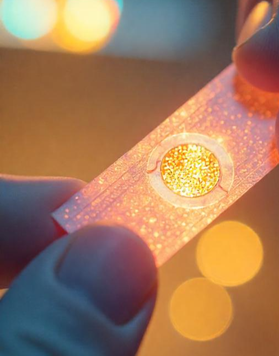Currently, there is a global need for the development of technologies that allow to detect analytes in situ and in real time. Among these analytes, pathogens are one of the main priorities due to the threat they pose against One Health. In this regard, sensors commercially available nowadays present some drawbacks, such as their elevated cost, prolonged sample processing times and the need of additional reagents. Given this situation, biosensors that do not require reagents have become an increasingly appealing alternative for the detection of pathogens. One type of sensor commonly used is LC (composed of an inductor and a capacitor), already implemented in industrial monitoring applications, such as metal detection. These systems offer significant advantages over other type of technologies, for example their ability to detect analytes without a need of physical contact, which makes them optimal for difficult access applications and/or hazardous analytes. In this context, researchers from the Instituto Interuniversitario de Investigación de Reconocimiento Molecular y Desarrollo Tecnológico (IDM), belonging to the Universitat Politècnica de València (UPV), and from the Universitat de València (UV) have developed a biosensor for pathogen detection based on a LC circuit.
The research team has developed a biosensor for the detection of pathogens in air and liquid based on a LC circuit. The detection mechanism of the transducer is based on using the parasitic capacitances of the inductor in LC circuits, specifically the modification of the dielectric constant of the medium. This way, the system allows to monitor and detect analytes such as bacteria and viruses.
The researchers have already proven the concept of the developed system by detecting a bacteriophage virus both in air and in liquid. The current Technology Readiness Level of the system is TRL 2. Furthermore, one of the improvements the team is working on is increasing the operating frequency to enhance the sensitivity of the electrical signal, given that the system currently operates up to 10 MHz. Benefits:
- Reduction in the cost associated to other technologies commercially available, such as spectroscopy or chromatography.
- Rapid detection of pathogens.
- Contactless detection.
- Versatile biosensor.
The represented research group is looking for commercial feedback on the technology mentioned. Additionally, the research team is actively seeking a potential partner to evaluate the applicability of their development.
Institution: Universitat Politècnica de València (UPV) y Instituto Interuniversitario de Investigación de Reconocimiento Molecular y Desarrollo Tecnológico (IDM)
TRL: 2-3
Protection status: Spanish Patent Application.
Contacto: Noelia Mas / noelia@viromii.com

